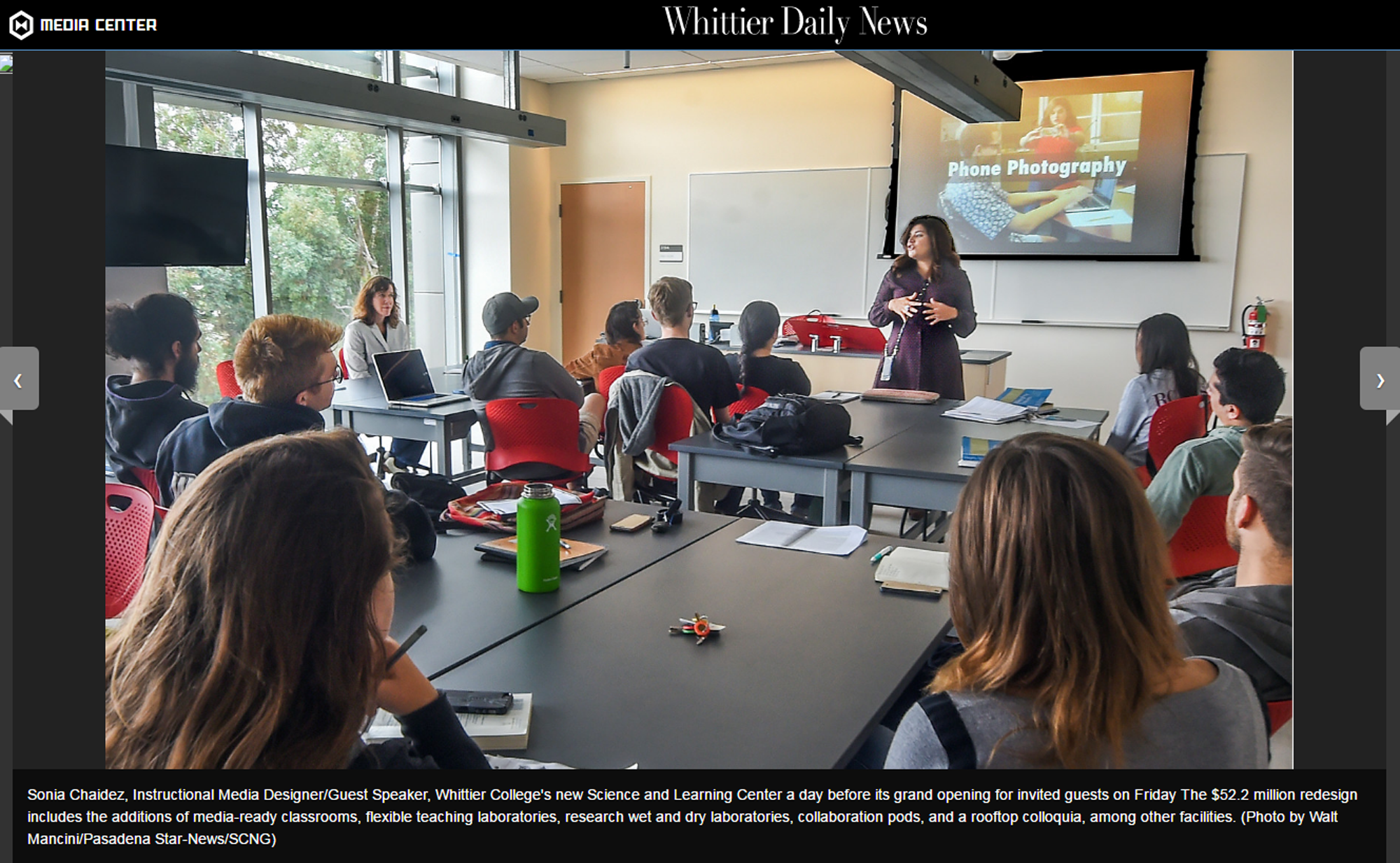
This semester students from the paired course “Medical Sociology and the Science Behind Obesity” are engaging in a new way to do digital storytelling. The method known as PhotoVoice is borrowed from a movement that aims to use participatory photography as a self-advocacy tool. This assignment asks students to use photography and video as a way to tell a story about the relationship between their environment, their community, and their health. Professor of Sociology Julie Collins-Dogrul and Professor of Biology Sylvia Vetrone first taught this course together in the Spring of 2012. Students worked in groups to create video projects that explored and documented both negative and positive resources surrounding local parks and corner stores. The student digital stories were then placed on a map that collectively told a richer story of the neighborhood structure. You can see the stories from 2012 here by clicking on each pin on the map.
Professor Julie Collins-Dogrul wanted to revisit this project but with a slight difference of focus. She is asking students to choose a public elementary school attendance map (a proxy for a neighborhood) to document positive and negative resources in the neighborhood like safe ways to walk to school and options for healthy lifestyles like nearby parks or abundant fast food. “The PhotoVoice projects aim to document lived experiences, communities, resources, and challenges in a digital story” says Collins-Dogrul. “The technique gives voice to local people (including Whittier College students) rather than experts, and enables locals to evaluate their own community needs and advocate for social change.”
An important part of this project will be the interaction of students with community members. “Because of the public nature of our PhotoVoice projects students must get consent from people they wish to photograph if these people can be identified. Photovoice projects are not scientific research, but they are public, and therefore we require consent” says Collins-Dogrul. “Students, likewise, give consent for their projects to go public.”
The goals of this project are to enable students to record and communicate their views on Whittier’s food and physical activity, strengths and concerns, to facilitate praxis; a way of connecting theory and action, to promote dialogue and knowledge about obesity through discussions of the PhotoVoice process and final digital story and to use visual methods of knowledge production to advocate for policy change.
Fall 2016 digital stories will be added to update the map from 2012.
